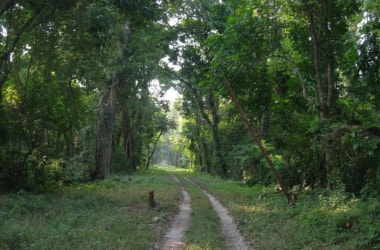Millions of forest dwellers in India do not have access to rights/forest resources
Q. What percent of the potential forest area for the community governance has been recognised in India?- Published on 13 Dec 16a. 4
b. 5
c. 6
d. 3
ANSWER: 3

According to The "Promise and Performance: Ten Years of the Forest Rights Act” report released on 13th Dec, 2016, millions of forest dwellers in the country still do not have rights to conserve forests or access to forest resources.
- Ten years after the forest rights act 2006 was passed by parliament - a law that secures rights of forest dwellers and empowers them to protect forests–only about 3% of the potential forest area for community governance has been recognised.
- The report found rights to manage, conserve and use forest resources by forest dwelling tries could have been recognised over an area of 34.6 million ha and an area larger than MP, but has only been recognised in little over 1.1 million ha or 3 percent of the potential.
- The report by Community Forest Rights-Learning and Advocacy (CFR-LA) employs data from Census 2011 to evaluate total forest area inside and outside village boundaries (34.6 million ha) as the minimum potential area over which community forest resource rights could be recognised.
- This comprises the minimum estimated forest area outside revenue village boundaries under customary use.
- Large swathes of customary forests in C. Indian states are outside village boundaries.
- It is estimated that the law can deliver community forest resource rights to about 200 million tribals and other forest dwellers living in 170,000 villages across the country.
- Lack of political will and forest bureaucracy is the reason for this.
- This law transfers decision making powers and forest conservation responsibilities to the gram sabha.
- For example the Niyamgiri case in Odisha has already established how gram sabhas can play a powerful role in protecting the cultural and resource rights of indigenous communities after gram sabhas unanimously voted against bauxite mining in the hills inhabited by Dongria Kondhs.
- The report also documents why these rights are significant for conservation.
- Tribes can play an important role in mitigating climate change impact.
India’s Plan for EcologyIndia’s INDC aims to sequester an additional 2.5 billion tonnes of carbon.
Effective implementation of forest rights act will be critical for carbon sequestration through checking forest degradation and enhancement of forest stocks.
Rights and Resources Initiative (RRI) report concluded that deforestation and subsequent increase in carbon dioxide emissions happen when the rights of indigenous peoples are ignored.